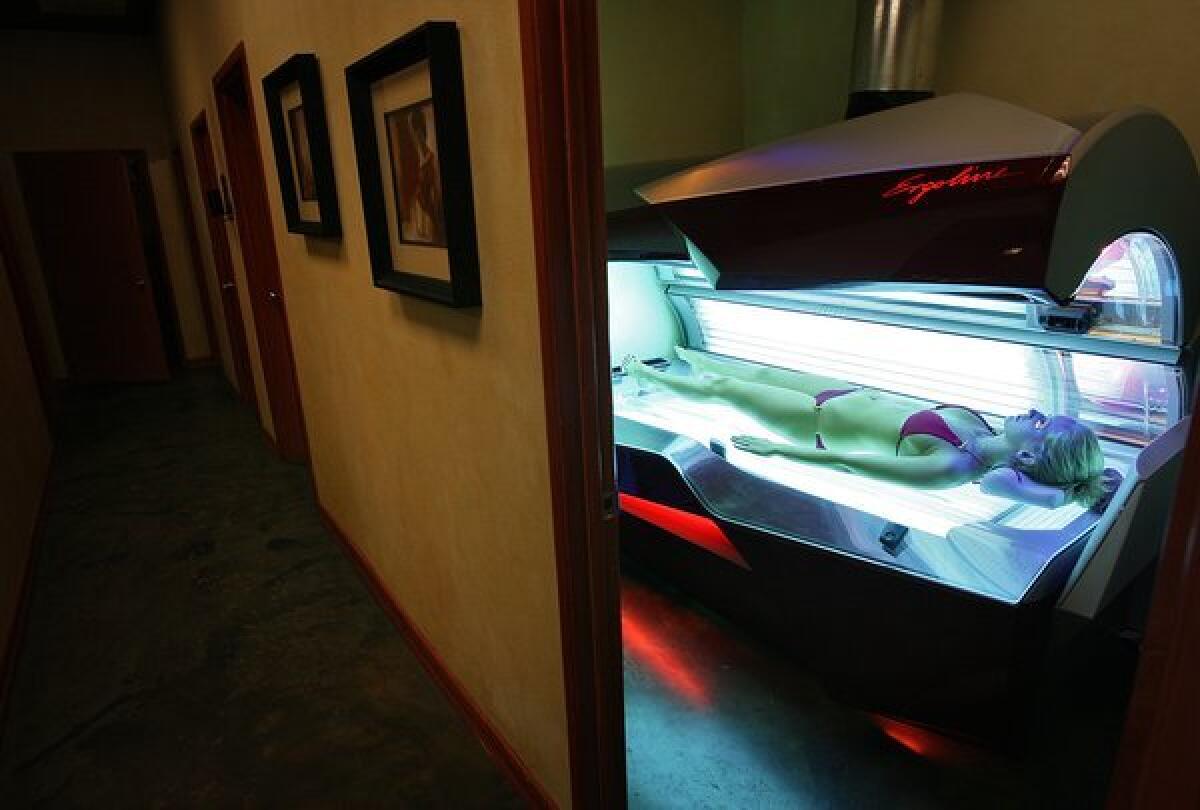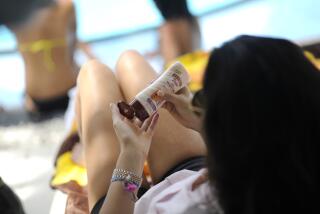Beware of the killer tanning bed

“Tanning kills,” warns Travis Kidner, a skin cancer surgeon, in a recent Times Op-Ed article advising against tanning beds.
Still, tanning salons continue to attract customers, many of whom are young, white women undeterred by the dangerous risks. Science Now’s Karen Kaplan reported:
“The latest evidence comes from researchers at the Centers for Disease Control and Prevention. In a research letter published online Monday by JAMA Internal Medicine, they report that 29.3% of white high school girls went to an indoor tanning parlor at least once a year, and 16.7% went ‘frequently’ -- at least 10 times in a 12-month period. In addition, 24.9% of white women under age 35 indoor-tanned at least once a year and 15% did so ‘frequently.’”
Yikes.
Even more sobering are the facts Kidner presents in his article. Discussing melanoma, the most deadly form of skin cancer, he wrote:
“The chance of developing it during a lifetime is 1 in 50. And while melanoma accounts for less than 5% of skin cancer cases, it causes 75% of skin cancer deaths. This year alone there will be more than 76,000 new cases of melanoma diagnosed in the United States, causing 9,000 deaths.”
It’s scarier still: “Research has shown that just one indoor tanning session increases the user’s chances of developing melanoma by 20%, and each additional session during the same year boosts the risk almost another 2%. One study found that when people first used a tanning bed before the age of 35, they increased their risk for melanoma by 75%.”
So, why aren’t these young women freaked out about getting cancer? Maybe it’s because people are more likely to feel immortal when they’re young. It’s possible some get addicted to tanning, just like smokers get hooked on cigarettes. There’s also the possibility that many young women simply don’t know about the cancer risks.
There’s a perception that tanning beds are a smart way to get a base tan before going out into the sun. We also, as a culture, associate tanned skin (well, within reason) with health and vitality, whereas we often interpret pale people as sickly.
Clearly, the concept of tanning needs an image makeover. And the messaging needs to start when kids are young, before the lure of the tanning bed beckons.
“The U.S. Preventive Services Task Force has found that peer counseling and videos that emphasize how tanning ages the skin are two interventions that actually work,” Kaplan reported. Hey, if you can’t appeal to someone’s sense of mortality, then go for the vanity angle.
Kinder also agreed with raising awareness, and advocated for warning labels on tanning beds. “People have to understand that there is no such thing as a healthy tan, particularly one that comes from a tanning bed,” he said.
As for what skin cancer looks like, check out Glamour magazine’s “skin check” gallery. I compared one of my moles against this chart a few years ago and headed straight to the dermatologist “just in time,” as the doctor said, to have it removed.
ALSO:
The wrong way to get rid of San Diego Mayor Bob Filner
Photo essay: How gritty L.A. transforms from day to night
Another shark attack in Hawaii: Is it revenge for shark fin soup?
Follow Alexandra Le Tellier on Twitter @alexletellier and Google+
More to Read
A cure for the common opinion
Get thought-provoking perspectives with our weekly newsletter.
You may occasionally receive promotional content from the Los Angeles Times.









